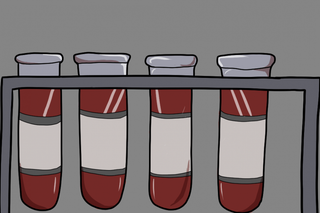
All You Need to Know About Getting Tested For Sexually Transmitted Infections
Sex ed sure didn’t prepare us.

The habit of getting regular tests done to determine any risks of sexually transmitted infections isn’t a common one for most Indians. A combination of stigma related to sexual diseases, relative inaccessibility of and lack of awareness around sexual health checkups has normalized people’s complacency, a phenomenon doctors lament far and wide.
Why most people don’t get tested regularly
A lack of proper sex education in schools has left many sexually active adults to wing it when it comes to practicing safe sex, with a heavy reliance on condoms. Growing up, most teachers in schools were embarrassed to talk about sex-related issues, which made asking questions difficult — which made finding answers to those question later in life difficult, too.
“While we studied about STIs, we never got told that we have to get tested,” Ruta Bhatt, 27, says. Two men interviewed, who prefer not to disclose their names, assured me they had never contracted an STI — not because they had been tested and given the all-clear, but because they had always been “cautious.”
“Honestly, I wasn’t taught absolutely anything, not even close to what I know now, which should have been taught to us. It was barely even brushed upon,” says a 24-year-old, who prefers to be identified as I.A.
While most students might know the names and symptoms of sexually transmitted infections, there is little-to-no connection made, while in school, to risk in real life.
“Less than 5 percent of girls are coming in to get tested or get Pap smears,” says Dr. Munjaal Kapadia of his experience as a Mumbai-based gynecologist, in his podcast, She Says She’s Fine. In several episodes, he describes how his patients are more afraid of getting pregnant than of contracting an STI.
Related on The Swaddle:
Undiagnosed Sexually Transmitted Infections Can Make PMS Worse
A similar ignorance has permeated the queer community, where conversations around sexual health are limited — when they’re not nonexistent, says Sakshi Juneja, founder of queer blog Gaysi, on the same podcast. The medical community has not been equipped with information and skills to treat queer patients, which also makes it difficult for members of the LGBTQ+ community to have open and constructive conversations about sexual health with a medical professional, she says. With the decriminalization of Section 377, she adds, “I hope that now we will be able to have discussions about sex among alternate sexual identities.”
How and where to get tested
A cursory search on Google will give you several pathological laboratories that offer STI testing services. Better2Know clinics, which have branches nationwide, for example, offer several different packages or panels of testing.
They range from a ‘Peace of Mind’ screening, which tests for chlamydia, gonorrhoea and syphilis, to a more comprehensive panel called the Platinum screening, which tests for those three infections as well as HIV, Hepatitis A, B and C, and genital herpes. The Platinum also includes a urine culture, to test for bacterial infections. They also categorize tests by the amount of time it has taken you to get to the clinic after your last sexual experience, as that determines how far along a viral or bacterial infection may have progressed.
In addition, they also provide tailored STI screenings for Men Who Have Sex With Men (MSM), Women Who Have Sex With Women (WSW), and for those considering pregnancy.
Costs range from Rs. 5,000 for urine cultures or tests for HPV and genital warts, to Rs. 30,000-Rs. 50,000 for the platinum panel.
STI testing can also be done at most hospitals, if requested specifically. I.A. has recently started to get regular STI checkups, after her sexual partner suggested it. She got all the basic scans done at Apollo Hospitals in Chennai, she says, where the costs ranged between Rs. 1,800 to Rs. 2,200. “It should be free, yes, but also thinking about the labor, the whole blood test, all the equipment I used, it’s a fair enough cost,” she added.
How often to get tested
Doctors advise sexually active individuals to get tested every five to six months, regardless of any suspicions of infection or disease, as many STIs never manifest into noticeable symptoms. In women, especially, symptoms of STIs can take months or years to manifest; meanwhile, unbeknownst to them, they act as carriers of the infection, potentially passing it to their partners.
It is also recommendedto ask a potential new sexual partner if they have been tested, regardless of whether they tell you that they always use protection. While condoms do reduce the risk of getting an STI, they are not 100 percent effective and therefore, not safe to fully rely on, especially if neither you nor your partner have ever been tested.
Related on The Swaddle:
The Pap Smear, A Simple Test That Can Save Your Life
Furthermore, sometimes STIs can manifest in the form of skin infections, which can exist outside of the area normally covered by a condom, making you vulnerable even if you’ve used protection. Crabs, syphilis, herpes and HPV can all be contracted even when using a condom.
While costs and accessibility of testing facilities can be a major deterrence in getting routine checkups, it’s the least you can do to ensure your, and your sexual partners’, health.
Rajvi Desai is The Swaddle's Culture Editor. After graduating from NYU as a Journalism and Politics major, she covered breaking news and politics in New York City, and dabbled in design and entertainment journalism. Back in the homeland, she's interested in tackling beauty, sports, politics and human rights in her gender-focused writing, while also co-managing The Swaddle Team's podcast, Respectfully Disagree.
Related


Is This Normal? “I Pick at My Skin Regularly Until it Bleeds”
